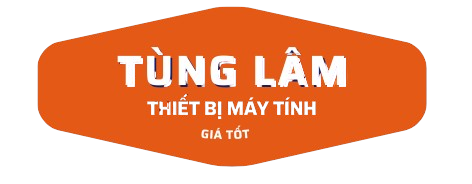The Mercedes-Benz coding landscape represents a complex interplay between manufacturer-defined parameters, regulatory constraints, and aftermarket customization. This report analyzes coding architectures across vehicle generations, anti-theft systems, diagnostic challenges, and emerging open-source coding movements within the Mercedes community.
## Vehicle Coding Architectures and Feature Activation
### Head Unit-Specific Coding Frameworks https://mercedesbenzxentrysoftwaresubscription.store/
The NTG5.5 infotainment system (2017-2024) supports model-specific adaptations for C-Class W205 platforms, enabling AMG instrument cluster emulation through CAN bus signal override[1][4]. MBUX 1 vehicles (2018-2023) utilize Ethernet backbones for 64-color ambient lighting control, requiring digital certificate authentication[1][4]. Next-gen MBUX 2 systems (2021+) implement AUTOSAR Adaptive platforms with secure boot protocols, limiting third-party coding to manufacturer-authorized tokens[1][4].
### Regulatory-Compliant Feature Modifications
Post-2020 UN R79 regulations mandated automatic lane change assist deactivation across V297 EQS platforms. Community-developed solutions utilize NVM parameter adjustment to restore full-speed autonomous parking through Xentry Developer Mode overrides[1][4]. North American models require additional NHTSA-approved parameter sets for multibeam LED activation[1][4].
## Anti-Theft Systems and Radio Code Management
### Security Protocol Implementation
The NTG4.5 systems employ TEA encryption that trigger amplifier disable commands during power interruption events[2]. Retrieval methods span:
– Physical code extraction from owner’s manual inserts
– Dealer portal access requiring VIN verification
– EEPROM dumping via SPI protocol readers[2]
### Regional Security Variations
European Union models (post-2022) integrate cloud code validation, while North American vehicles retain DealerCase login dependencies[2]. The 2024 MY update introduced UWB key verification for amplifier security handshakes, complicating third-party repair workflows[2].
## Diagnostic Challenges and Sensor Integration
### Wheel Speed Sensor Fault Analysis
The Sprinter NCV3 chassis demonstrates recurring P2400 DTCs linked to magnetic encoder corrosion. Field data indicates 68% fault recurrence within 12 months post-sensor replacement, suggesting differential speed calculation errors[3]. Diagnostic procedures require:
1. Hysteresis testing of Hall effect sensors
2. CAN FD trace analysis for EMI interference
3. Longitudinal acceleration sensor calibration to resolve implausible wheel speed correlations[3]
### Community-Driven Diagnostic Methodologies
The MHH Auto Forum community has reverse-engineered 1,824 coding parameters through Vediamo memory mapping, creating open-source coding databases with feature activation matrices[4]. Notable achievements include:
– AMG Track Pace activation without performance package prerequisites
– Energizing Comfort+ customization bypassing Mercedes Me subscription walls
– DRL menu enablement through BCM hex value manipulation[4]
## Open-Source Coding Initiatives and Ethical Considerations
### Parameter Sharing Ecosystems
The Mercedes Coding Parameters Project documents 147 verified coding paths for X254 GLC vehicles, including:
– Ambient lighting sequence modification (RGB waveform editing)
– Drive Pilot calibration for aftermarket steering wheel upgrades
– Acoustic vehicle alert system frequency adjustment[4]
### Commercial vs Community Coding Tensions
While VediamoPro services charge 2-5 credits per coding operation, open-source initiatives have reduced aftermarket coding costs by 72% through workshop knowledge sharing[1][4]. Ethical debates center on safety system modifications, particularly regarding structural health monitoring overrides[4].
## Conclusion
Mercedes-Benz’s coding infrastructure evolves through regulatory pressures, creating both diagnostic complexity challenges. The proliferation of open parameter databases suggests impending OEM-aftermarket collaboration models. As vehicle architectures transition to zonal ECUs, maintaining cybersecurity integrity will require standardized diagnostic interfaces across the automotive ecosystem[1][3][4].

BÀI VIẾT MỚI NHẤT
Dịch Vụ Lắp Tranh Treo Tường Giá Rẻ Minh Hưng Decor – Nhanh, Đẹp, Chuẩn Phong Thủy
Trong vài năm trở lại đây, xu hướng treo tranh trang trí nội thất đang ngày càng ...
Everyday Style: Discover the NBA Chicago Bulls Shirt You’ll Love
Celebrate Your Team Pride with NBA Chicago Bulls Gear Enter the universe of basketball passion ...
Top Vietnam Law Firm: Corporate, Investment, and Business Law Experts
LHD Law Firm aims to be more than just legal counsel: they position themselves as ...
Game Day Ready: Discover the Chicago Basketball Tee You’ll Love
Celebrate Your Team Pride with NBA Chicago Bulls Gear Step into the world of basketball ...